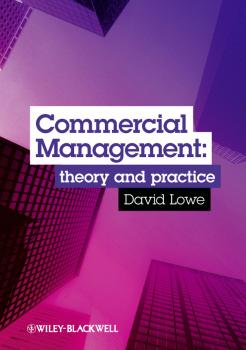ТОП просматриваемых книг сайта:
David Lowe
Список книг автора David LoweАннотация
Die tollpatschige, aber liebenswürdige Anna Müller, ihres Zeichens Kleinstadtmensch aus dem Achthundert-Seelen-Dorf Untermoscheln, muss gezwungenermaßen ihr gesamtes Leben umkrempeln. Zu ihrer eigenen Verwunderung verlässt sie zum ersten Mal in ihrem Leben ihren Heimatort und kommt übergangsweise bei ihrer ehemaligen besten Freundin Alex in Berlin unter. Doch diese Freundin hat ihr einiges verschwiegen… Schnell muss Anna feststellen, dass ihr neues Single-Leben in der großen Stadt sie vor viele ebenso große Herausforderungen stellt. Dabei raubt ihr nicht nur ihr unangekündigter Mitbewohner den letzten Nerv – auch das Thema «Sex» nimmt in ihrem Leben plötzlich mehr Platz ein, als ihr lieb ist…
Аннотация
This is the first book to establish a theoretical framework for commercial management. It argues that managing the contractual and commercial issues of projects – from project inception to completion – is vital in linking operations at the project level and the multiple projects (portfolios/ programmes) level to the corporate core of a company. The book focuses on commercial management within the context of project oriented organisations, for example: aerospace, construction, IT, pharmaceutical and telecommunications – in the private and public sectors. By bringing together contributions from leading researchers and practitioners in commercial management, it presents the state-of-the-art in commercial management covering both current research and best practice. Commercial Management of Projects: defining the discipline covers the external milieu (competition, culture, procurement systems); the corporate milieu (corporate governance, strategy, marketing, trust, outsourcing); the projects milieu (management of uncertainty, conflict management and dispute resolution, performance measurement, value management); and the project milieu (project governance, contract management, bidding, purchasing, logistics and supply, cost value reconciliation). Collectively the chapters constitute a step towards the creation of a body of knowledge and a research agenda for commercial management.
Аннотация
Commercial Management: theory and practice defines the role of commercial management within project-oriented organisations, providing a framework for and helping to develop a critical understanding of the factors that influence commercial management practice. It also identifies generic aspects of this practice and provides a theoretical foundation to these activities, by reference to existing and emergent theories and concepts, as well as to relevant management best practice. The book is structured into four parts: Part 1 Introduction – Commercial Management in Project Environments explores the nature of commercial practice within project-oriented organisations at the buyer-seller interface. It presents a Commercial Management framework, which illustrates the multiple interactions and connections between the purchaser‘s procurement cycle and a supplier‘s bidding and implementation cycles. Additionally, it outlines the principle activities undertaken by the commercial function, identifies the skills and abilities that support these activities and reviews the theories and concepts that underpin commercial practice. Finally, it identifies areas of commonality of practice with other functions found within project-oriented organisations, plus sources of potential conflict and misunderstanding. Part 2 – Elements of Commercial Theory and Practice covers commercial leadership; exploring strategy; risk and uncertainty management; financial decision-making; and key legal issues. Part 3 – Approaches to Commercial Practice addresses best practice management; and commercial and contracting strategies and tactics. Finally, Part 4 – Case Studies offers two extended case studies: Football Stadia (the Millennium Stadium, Cardiff; the Emirates Stadium, Islington; and Wembley Stadium, London); and Heathrow Terminal 5. The book provides a one-stop-shop to the many topics that underpin commercial management practice from both a demand (buy-side) and a supply (sell-side) perspective. It will help develop an understanding of the issues influencing commercial management: leadership, strategy, risk, financial, legal, best practice management and commercial and contracting strategy and tactics. This book’s companion website is at www.wiley.com/go/lowecommercialmanagement and offers invaluable resources for both students and lecturers: • PowerPoint slides for lecturers on each chapter • Sample exam questions for students to practice • Weblinks to key journals and relevant professional bodies



